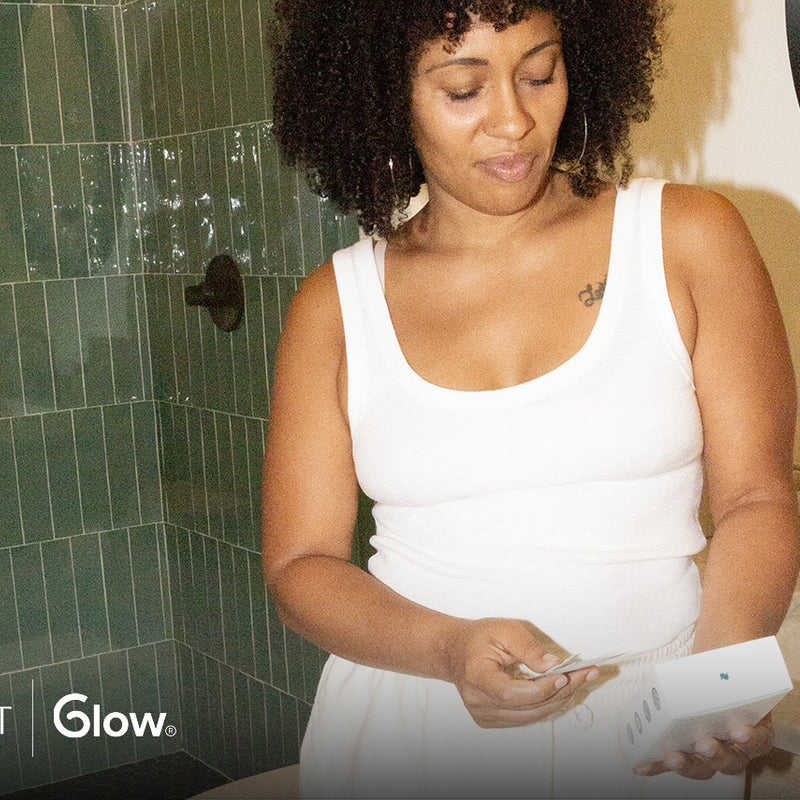The Rising Median Age For Giving Birth

A recent report from the U.S. Census Bureau is highlighting the highest median age on record for women giving birth.
By OBGYN and fertility specialist Dr. Kenosha Gleaton
You may have already heard that the age at first birth in the United States has been increasing over the past few decades. This can be explained by numerous factors, including accessible fertility treatments, birth control, and more.
Overall trend
The age at which women give birth has been regularly tracked globally and nationally. Most often in OECD countries, we see an increase in the average age at childbirth. From 1970 to 2019, this change was usually between two and five years. There are a few exceptions to this trend, such as in Colombia, Costa Rica, and Mexico, where the average age for giving birth actually decreased by about 2 years.
The most recent U.S. Census reported the highest median age on record for women during childbirth, increasing from 27 to 30 years. The general trend for fertility rates in the United States was a gradual decline from 1990 to 2019. There were over 70 births each year for every 1,000 women of childbearing age in 1990. In comparison, there were about 58 births per 1,000 women of the same age in 2019. We see a marked variation in fertility rates when broken down by age. For example, fertility rates of women ages 20-24 fell by about 42% when comparing rates from 1990 to 2019. During the same time period, however, the rates of women ages 35-39 grew by 67%. Rates also vary when broken down by county. The National Center for Health Statistics found that from 2007-2017, the average age of women at first birth rose by 1.3 years in rural areas and 1.8 in larger metropolitan areas.
While there was a large jump in birth rates for women in their late 30s, the decline seen in younger groups still brought the overall fertility rate down, shifting the median age at childbirth to 30.
By population sub-groups
There is an interesting breakdown by sub-group when reviewing birth rates. For example, the largest increase in age was found among black women and women not born in the United States. The median age for these groups rose from 24 to 28, and from 27 to 32.
The smallest increase in age was seen among all women born in the United States, which rose from 27 to 29 years.

These figures from the Census Bureau’s website show the breakdown of fertility rates and median ages at birth by nativity and race.

Potential reasons for rising age
There are many reasons women may be giving birth later in life. There are increased knowledge and advancements in medicine and fertility, and many have or are gaining access to things like egg freezing, birth control, education, and more.
-
A 2021 cohort found that there was an extreme increase in the number of oocyte cryopreservation (egg freezing) occurring every year. From 2010 to 2016, the USA saw an 880% increase in egg freezing, with the majority of patients aged in their 30s.
-
Tracking access to contraception for the entire country is a large feat, but we do know that marketplace health insurance plans are required to cover contraceptive methods and counseling to women. From 2016 to 2018, an intervention that included state health departments of 27 jurisdictions aimed to increase contraception access. Results found that 35/79 goals had been achieved within one year, and a later follow-up found that jurisdictions were sustaining efforts for about 87% of their total goals. Advancements like these and a continuous push for affordable, accessible contraception are driving forces for women’s bodily autonomy and family planning.
-
According to Pew Research Center, young women are more likely to be enrolled in college than young men. Among those aged 25 and older, women are also more likely than men to have a four-year college degree. This gap is even wider for young adults ages 25 to 34. In 1990, only about 18% of women ages 25 and older had a bachelor’s degree. In 2021, this increased to 39%.
-
Women’s labor force participation has also increased rapidly when comparing rates from 1960 to 2000. Around 37.7% of women were in the labor force in 1960, compared to 60% in 2000.
To summarize, there are many reasons we’re seeing a rise in the median age for giving birth, from accessible fertility care to prioritizing an education or career.
Shop the Women's Fertility Test
Moving forward
Looking ahead, the U.S. Census Bureau’s population projections for 2020 to 2060 indicate more declines in fertility rates, but a population growth of 79 million people. The majority of this population growth is projected to come from international migration rather than births. Pew Research Center estimates the global fertility rate will be about 1.9 births per woman by 2100, a decrease from the 2.5 rate today.
Only time will tell what happens with fertility rates and the age at first birth, but we can expect that the U.S. and global population will look very different in the coming decades.
Advancements in medicine and access to education are likely to continue playing a role in family planning and population growth.
Reach Out, We're Here
Have questions about your order or products? For the speediest answer, check out our FAQ section. Need something else? Come find us below.
Please keep in mind our regular business hours; Monday-Friday, 9am-5pm CT.
Customer Support
support@natalist.com
Press Inquiries
media@everlyhealth.com
Business & Partnerships
team@natalist.com
Affiliates + Influencers
team@natalist.com
Job Openings
Careers Page























